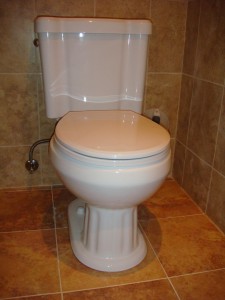Learn How to Clean Clogged Drains
 If you were to ask any homeowner — male or female — about their least favorite household chore they perform daily or weekly, it would probably be a toss-up between: 1.) Doing the laundry, and 2.) Cleaning the bathroom. With laundry, you run the risk of using the wrong laundry detergent, stain remover, fabric softener, or washing or drying on the wrong temperature. With cleaning the bathroom, there is a certain “ewww” factor that most people shy away from related to cleaning toilets or mold out of the shower. And cleaning bathrooms are even worse when clogged drains are involved.
If you were to ask any homeowner — male or female — about their least favorite household chore they perform daily or weekly, it would probably be a toss-up between: 1.) Doing the laundry, and 2.) Cleaning the bathroom. With laundry, you run the risk of using the wrong laundry detergent, stain remover, fabric softener, or washing or drying on the wrong temperature. With cleaning the bathroom, there is a certain “ewww” factor that most people shy away from related to cleaning toilets or mold out of the shower. And cleaning bathrooms are even worse when clogged drains are involved.
It is an unfortunate fact of life that you will experience clogged drains from time to time, jufst as you will a rainy day on an outdoor family reunion. At New Canadian Drain & Plumbing, we have no control over the weather, but our highly trained and licensed plumbers know a thing or two about cleaning drains quickly and easily. If you are a Toronto area resident, chances are you have seen our informative videos on HGTV Canada where we talk about common plumbing problems and how they can be resolved. One thing many customers take for granted is cleaning clogged drains, which is not as difficult as you may think if you arm yourself with the right information.
Learn How to Clean Clogged Drains
Method No. 1 – In our experience, the tried-and-true combination of a little elbow grease and the ubiquitous wood-handled plunger will take care of most clogged drains, toilets, or sink bowls. Relatively inexpensive, this handy tool will allow you to clean minor blockages with minimal effort. If you are going to use a plunger, we have two important recommendations: 1.) Buy one with a wooden handle, as they are more sturdy than all plastic models, and 2.) Do not forget to place towels around the base of the toilet, for instance, and plunge slowly but with force. Remember what happens with a plugged toilet and sloshing water? “Ewww.” That is a nasty mess you do not need to experience.
Method No. 2 – One symptom of clogged drains are pungent odors, which can be eliminated or minimized by pouring strong salt water down the drain. This is a simple solution for kitchen sinks that prevents grease from building up in drains as you do the dishes. Pouring this solution down the drain before you start washing dishes will make clean up easier in the long run. Remember: Never dump hot grease or butter of any sort into the drain because it could result in damage and expensive repairs in the future.
Method No. 3 – If the plunger method fails to clear out clogged drains, the next step is to buy a liquid drain cleaner solution. Make sure to read instructions and labels carefully because different drains require different kinds of cleaners. As an example, some chemical cleaners have been known to damage garbage disposals or plastic pipes so make sure you use the correct one for your plumbing. Also, remember to wear rubber gloves or a mask if directed. We would be remiss in not telling you that regular use of liquid drain cleaners can damage pipes.
Method No 4 – One of our favorite do-it-yourself solutions at New Canadian Drain & Plumbing is a mixture of vinegar and baking soda. Cheap and eco-friendly, vinegar and baking soda keep your drains clean, ridding it of strong odors associated with clogged drains. The ideal solution is to pour a half cup of baking soda into your drain, followed by half a cup of vinegar and boiling water and voila: A powerful, natural drain cleaner that will not ruin your plumbing.
Method No 5 – Finally, if none of these methods do the job, try a mechanical snake on clogged drains. A snake is a device with metallic threaded wiring that is very sturdy. It normally has a sharp end, which chews up and disperses undesired items as you wind it through the drain. It is important to remember that most clogs are minor and can be remedied with a little effort and some common sense. Visit us on Google+


